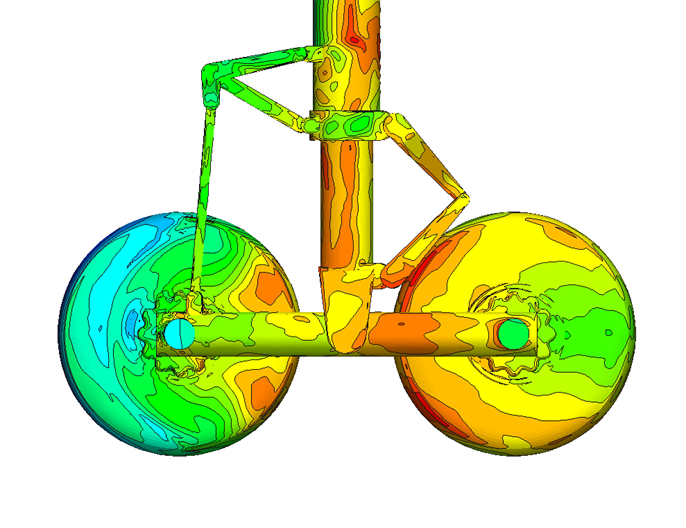Research into the flow field around different main landing gear configurations to determine the aero acoustic noise sources.
Wind tunnel test have shown that changing the bogie angle can lead to significant reductions in the noise generated by the turbulent flow around a main landing gear .The exact flow physics responsible for this noise reduction are not clear so this project uses computational fluid dynamics (CFD) to determine the flow field around different landing gear configurations. The changes in the flow field are then linked to the difference in the far field noise level generated by the landing gear. The results of this study will help to develop quieter aircraft in the future.
CFD simulations of a simplified and a complex four wheel main landing gear configuration have been done using both Fluent and OpenFOAM software. The mesh has been constructed in Gridgen using a hybrid grid strategy which resulted in 8 million cells for the simplified geometry and 24 million cells for the complex landing gear geometry. Both configurations have been run with three different bogie angles resulting in six simulations in total. The flow fields have been post processed using ParaView to show the characteristic flow features. The results show a clear relation between the bogie angle and the flow separation pattern on the wheels resulting in the formation of strong vortices. The downstream trajectory of the strong vortices and their distance to the geometry determine the far field noise levels of the landing gear.

PRMS (unsteady pressure level) on the surface of the main landing gear showing the locations of the noise sources